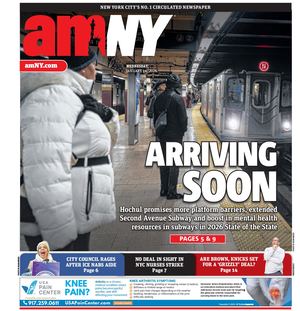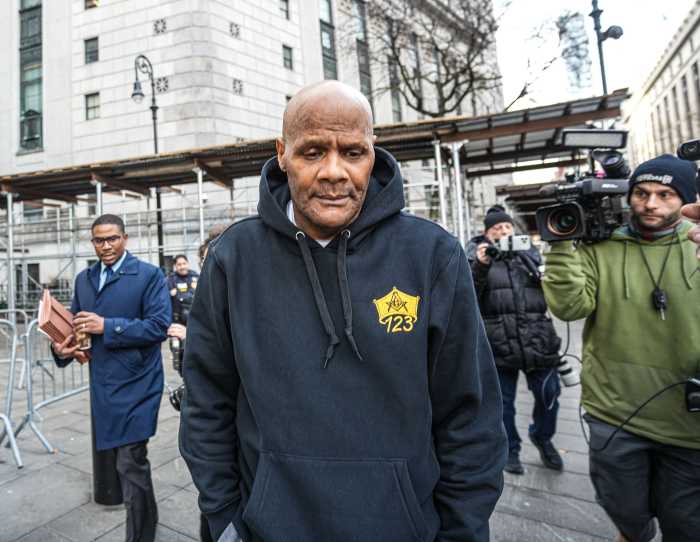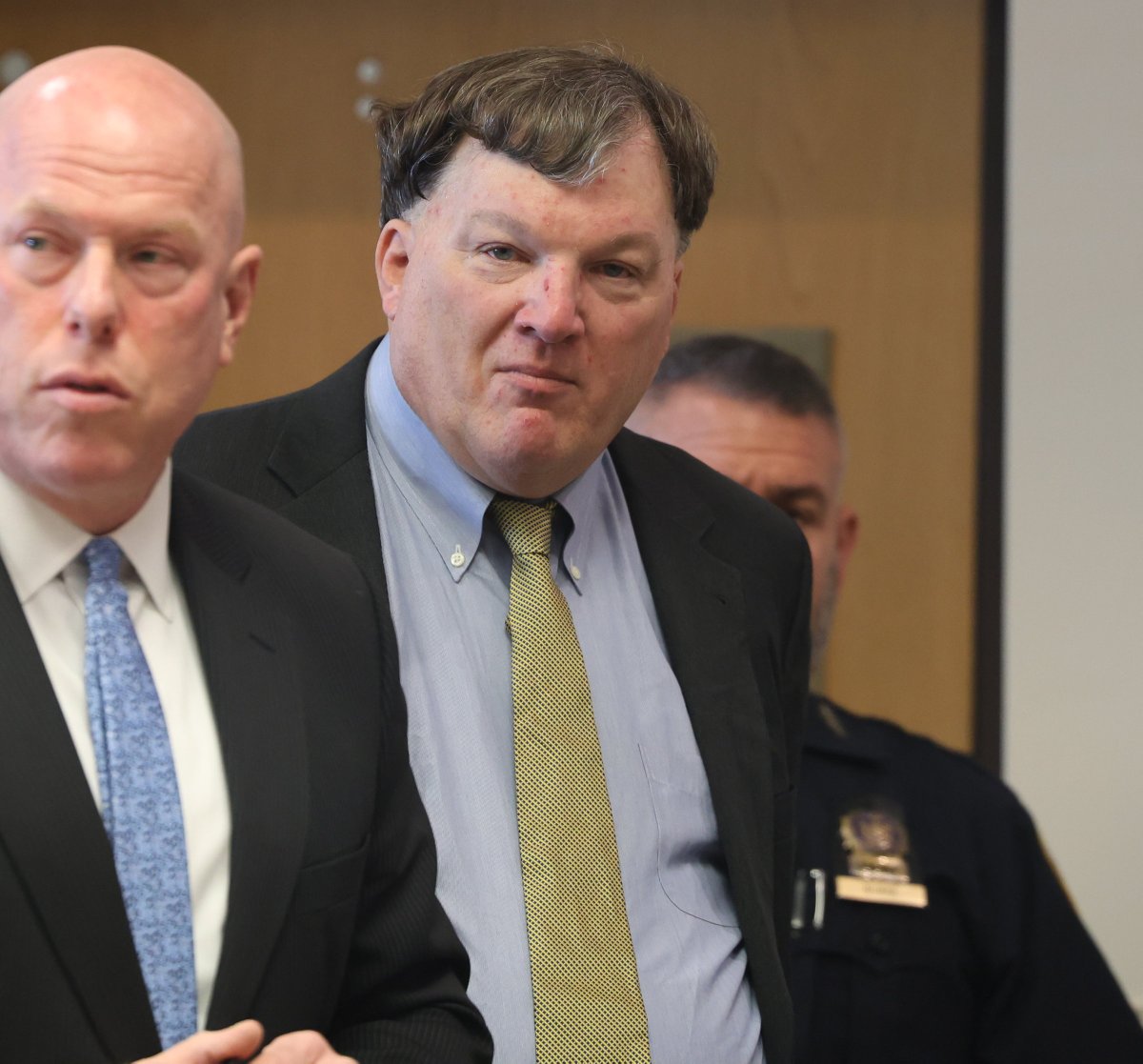BY ALINE REYNOLDS | The city-state agency charged with coordinating Downtown construction projects since the mid-2000s will be losing the bulk of its staff come March. And, though the agency pledges to continue to fulfill its core mission, exactly how it will go about mediating and monitoring some 60 major Lower Manhattan redevelopment projects valued at an estimated $30 billion, in light of the layoffs, is unknown.
Various sources have confirmed that four of the seven full-time staff members of the Lower Manhattan Construction Command Center will be let go by the end of next month. The agency’s remaining employees — Deputy Executive Director Joe Simenic, External Relations Director Robin Forst and Capital Planning-Construction Coordination Director Dave Frucher — will be transferred to the Port Authority of New York and New Jersey’s Lower Manhattan offices at 115 Broadway, according to Port Authority Spokesperson Steve Coleman. Since summer 2009, the L.M.C.C.C. has shared office space with the Lower Manhattan Development Corporation at One Liberty Plaza, across from the World Trade Center.
The layoffs purportedly include the axing of David Ortega, director of the agency’s website, Lowermanhattan.info, which boasted more than one million page views in 2011. It wasn’t immediately clear whether the website would be continued as is once Ortega is gone.
The downsizing coincides with the end of the state fiscal year on March 31, according to a source familiar with the situation. “People have been told informally they’ll be terminated, and the timeline is the end of March,” said the source, who requested anonymity due to the sensitivity of the matter.
Coleman confirmed the news Tuesday afternoon. After reviewing the future role of the agency with Mayor Michael Bloomberg’s office, Coleman said, “We are taking immediate steps to streamline the L.M.C.C.C.’s operations while maintaining its presence with the Downtown community and continuing its core mandates.”
Coleman continued, “This should lead to meaningful savings of government money, while preserving L.M.C.C.C.’s role.”
Neither Bloomberg’s nor Governor Andrew Cuomo’s offices responded to repeated requests for comment by press time.
Responding to Coleman’s comments, Forst said, “The L.M.C.C.C.’s goals remain unchanged. We look forward to continuing to serve the Lower Manhattan community by fulfilling our core functions.”
The L.M.C.C.C., created in 2005, hosts weekly construction contractor meetings and biweekly community forums to help manage Downtown construction staging and workers’ access to construction sites; the delivery of steel and other materials to the sites; car traffic and pedestrian flow; utility work and corresponding power outages; and construction-related sound, vibrations and other annoyances to area residents and workers. The agency’s environmental compliance director Tom Kunkel, one of the full-time staff to be dismissed, makes daily rounds of the Financial District to monitor dust and noise levels emanating from the myriad construction zones. The monitoring system has led to an eight percent drop in dust particles in the neighborhood since 2004, according to L.M.C.C.C. data.
Due to cutbacks by both state and city funding sources, the L.M.C.C.C.’s staff was progressively shrunk from 22 employees in 2006 to 11 employees in late 2010 to its seven current employees in late 2011. These periodic cuts, however, don’t appear to coincide with construction levels. According to a logistics presentation former L.M.C.C.C. Executive Director Bob Harvey made in July 2011, Downtown’s peak construction period is between first quarter 2012 and first quarter 2013.
Though the Port Authority is insisting that the L.M.C.C.C. will remain an independent entity that’s expected to last through the completion of its executive order in late 2013, it is unclear exactly how the agency will be able to carry out its core functions moving forward, and which of its services will be lost due to the layoffs.
The L.M.C.C.C. has struggled to keep up with operations as is, the anonymous source said, particularly since the departure last September of Harvey, who was never replaced.
“The agency’s at bare bones now as is, and obviously, it’d be impossible for the Command Center to perform at the level it has been with a staff of two.”
The cutbacks, the source said, are illogical. “If you’re going to take the time and trouble to renew the executive order, it doesn’t really make sense that you’d dissipate the staff approximately one-third of the way through.”
The news also troubled several Downtown residents who argue that the agency plays a critical role in the synchronization of construction projects in their own back yards.
“I’m very upset to hear this – we’ve been able to call upon the L.M.C.C.C. for so many incidents,” said Cedar Street resident and Community Board 1 member Pat Moore, whose apartment overlooks the World Trade Center. “Whoever’s in authority is basically saying that it’s okay for us to not have anyone in control of all the elements that affect our daily life.”
Moore continued, “I can’t tell you how many times I’ve walked out of my door in the course of the last four or five years to see the street has been closed with no prior notification. I’ve called the L.M.C.C.C. when that happened, and have been able to get satisfaction.”
Liberty Street resident and another C.B. 1 member Ro Sheffe said the decision to slash the majority of the agency’s staff is “very distressing” and “outrageously premature.”
“We’ve got infrastructure crumbling all over the place, and work crews working to either replace or repair infrastructure,” said Sheffe. “Look around and count the number of cranes you can see in the sky. Without that kind of oversight, the situation will be intolerable both for residents and workers in the community.”
Community Board 1 Vice Chair Catherine McVay Hughes, agreed that downsizing the L.M.C.C.C. would be a “penny-wise and dollar-foolish” plan that would “send the wrong message to a neighborhood that’s still rebuilding.” On behalf of C.B. 1, Hughes has crafted several resolutions urging the agency not to sunset before the area’s peak construction period.
“The L.M.C.C.C. is very critical to the delivery of services, so anything that would hinder L.M.C.C.C. and their ability to function, when we have more than 50 very large projects in our community in a very densely populated area, could slow and hinder the progress that’s been achieved in the rebuilding in the last 10 years,” said Hughes.
In addition to coordinating the 10,000-plus construction trucks that travel into Lower Manhattan every month, the agency, Hughes said, ensured that Vesey Street stay open to pedestrians despite the adjacent W.T.C. construction work and most recently assisted in the daunting opening of the National Sept. 11 Memorial Plaza.
One particular project the L.M.C.C.C. continues to mediate is the city’s reconstruction of Chambers Street. According to Tribeca resident Jeff Ehrlich, Forst came to the rescue several times when after-hour jackhammering was disturbing local residents.
“When companies do work late at night they might not have permits for, and residents can’t get inspectors over at the right time, the L.M.C.C.C. steps in and has a strong voice in getting inspectors there,” explained Ehrlich.
L.M.C.C.C.’s weekly construction meetings have proven to be instrumental in coordinating the city’s capital infrastructure projects, particularly the road work repair to Chambers and Fulton Streets, with new construction by private developers, according to Tom Foley, assistant commissioner of the city Department of Design and Construction.
“A lot of the time, we won’t know if there’s a specific private building planned for a certain area,” said Foley. “It certainly gives us a heads-up as far as private planned work that’s coming up several months from now, which may require revisions to our plans.”
Utilities company Con Edison, whose representatives have also sat in on the L.M.C.C.C. meetings, credited the L.M.C.C.C. for scheduling “large and complex” work along John Street and elsewhere Downtown in conjunction with private developers, the city and other utilities companies.
“This has eliminated much unnecessary work and helped minimize, as best as possible, the inconvenience to the community,” said spokesperson Allan Drury.





































